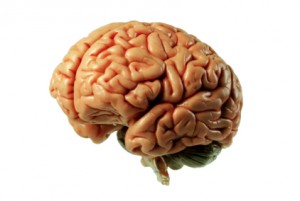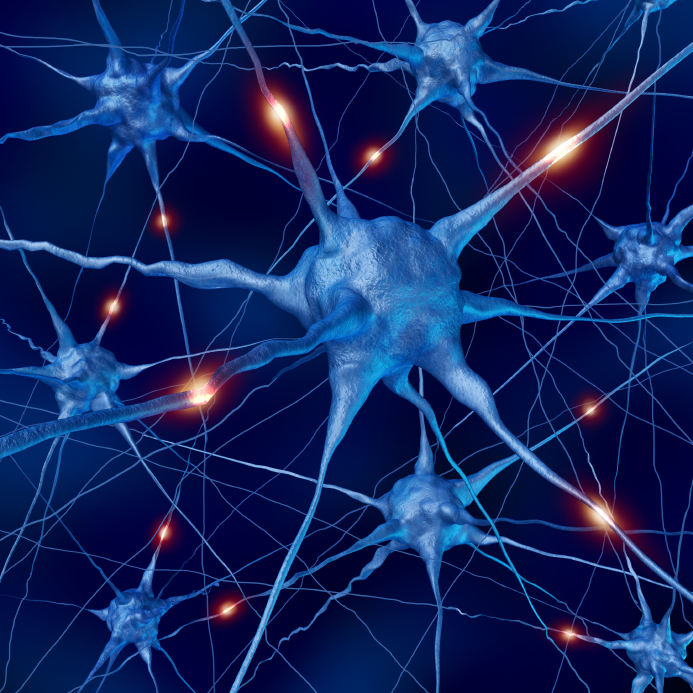Participation in Sports May Mitigate Genetic Risk for ADHD in School-Aged Children

At the 2021 meeting of the Society of Biological Psychiatry, researcher Keiko Kunitoki and colleagues reported that participation in sports decreased behavior abnormalities in 9- and 10-year-old children at genetic risk for attention deficit hyperactivity disorder (ADHD). Sports were associated with greater hippocampal volume, which was associated with fewer behavioral abnormalities. Kunitoki and colleagues concluded that “participation in team sports mitigated genomic risk for psychopathology at age 9–10 in part through increased hippocampal volume.”
Editor’s Note: These data are consistent with a program called the Vermont Family-Based Approach developed by researcher James Hudziak, who heads the Vermont Center for Children, Youth and Families at the University of Vermont. The program encourages families to practice different domains of wellness, such as music, mindfulness, exercise, and nutrition, among others. The idea is to support emotional and behavioral health, and to do so intensively in families where children show signs of mood and behavioral difficulties or are at risk for these difficulties.
Hudziak analyzed brain scans of 232 children aged 6 to 18 and reported that “practicing an instrument such as the piano or violin increased working memory, gray matter volume in the brain, and the ability to screen out irrelevant noise. Practicing mindfulness increased white matter volume and reduced anxiety and depression. Exercise also increased brain volume and neuropsychological abilities.”
In 2015, researcher Benjamin I. Goldstein reported that 20 minutes of vigorous exercise on a bike improved cognition and decreased hyperactivity in the medial prefrontal cortex in adolescents with and without bipolar disorder, and researcher Danella M. Hafeman reported that offspring of parents with bipolar disorder who exercised more had lower levels of anxiety.
To summarize, engaging in exercise, team sports, music, and meditation/mindfulness are beneficial for all children, and can be especially helpful for those at risk for depression or bipolar disorder. Children who are already symptomatic should additionally be offered something like family focused therapy (FFT), a multi-faceted approach developed by researcher David Miklowitz, in which families of young people at risk for bipolar disorder take part in therapy, learning together about the illness and practicing strategies for communication and coping.
Specific Regions of Hippocampus Linked to Bipolar Disorder
It has been clear for some time that the volume of the hippocampus, a brain region implicated in mood and memory processing, plays a role in bipolar disorder. A 2017 article by researcher Bo Cao and colleagues in the journal Molecular Psychiatry links loss of volume in specific sub-regions of the hippocampus with bipolar disorder.
The study by Cao and colleagues used magnetic resonance imaging (MRI) and a special segmentation technique to compare the volume of certain hippocampal sub-regions across people with bipolar disorder, people with major depression, and healthy control participants.
Participants with bipolar disorder had lower volumes in subfield 4 of the cornu ammonis, two cellular layers (the granule cell layer and the molecular layer), and the tail part of the seahorse-shaped hippocampus compared to the other subjects. Participants with bipolar I disorder had particularly severe volume loss in these areas.
Cao and colleagues also found that volume loss progressed along with the illness. The volumes of the right cornu ammonis, the molecular layer, and the subiculum decreased further in patients who had bipolar disorder for longer. As manic episodes increased, the volume of both sides of the cornu ammonis and the hippocampal tail decreased.
Early Life Stress Affects Volume of the Hippocampus
New research shows that there are crucial periods of early life in which a stressful event can reduce hippocampal volume in adolescence. In a study presented at the 2016 meeting of the Society of Biological Psychiatry, Kathryn L. Humphreys and colleagues found that children who experienced a significant stressor before age 8 had smaller hippocampi in early adolescence than children who did not have a significant stressor early in life.
The severity of the stressors that occurred when children were between the ages of 0 and 2 predicted the volume of the hippocampus later in life. This was true to a lesser extent for stressful events that occurred between the ages of 3 and 5. No effect was seen for stressful events that took place between the ages of 6 and 8.
The period of sensitivity to stressful events between ages 0 and 2 and its effects on hippocampal volume could influence a variety of psychiatric outcomes in conditions such as depression and post-traumatic stress disorder (PTSD).
Low Vitamin D Linked to Small Hippocampus & Schizophrenia
Low levels of vitamin D have been linked to schizophrenia in several studies. In one, infants with low vitamin D were more likely to develop schizophrenia in adulthood, but supplementation reduced this risk. A 2015 article by Venkataram Shivakumar and colleagues in the journal Psychiatry Research: Neuroimaging found that among patients with schizophrenia who were not currently taking (or in some cases, had never taken) antipsychotic medication, low levels of vitamin D were linked to smaller gray matter volume in the right hippocampus, an area involved in schizophrenia.
Vitamin D has neuroprotective effects and is important to normal brain development and function. Vitamin D is essential to the production of brain-derived neurotrophic factor (BDNF), a protein that is important for learning and memory, and vitamin D also reduces oxidative stress. BDNF deficiency and oxidative stress have both been linked to schizophrenia, and they both can cause abnormalities in the hippocampus.
Childhood adversity, epigenetics, and hippocampal volume
At the 2014 meeting of the International College of Neuropsychopharmacology, researcher Booij reported that in humans, there is an interaction between adversity experienced during childhood, and an epigenetic variation in the short form of the serotonin transporter (5HT-T ss, or SLC6A4), which can influence hippocampal volume during depression.
Epigenetics refers to environmental influences on the way genes are transcribed. The impact of life experiences such as stress is not registered in DNA sequences, but can influence the structure of DNA or tightness of its packaging. Early life experiences, particularly psychosocial stress, can lead to the accumulation of methyl groups on DNA (a process called methylation), which generally constricts DNA’s ability to start transcription (turning on) of genes and the synthesis of the proteins the genes encode. DNA is tightly wound around proteins called histones, which can also be methylated or acetylated based on events in the environment. When histones are acetylated, meaning that acetyl groups are attached to them, DNA is wound around them more loosely, facilitating gene transcription (i.e. the reading out of the DNA code into messenger RNA, which then arranges amino acids in order to construct proteins). Conversely, histone methylation usually tightens the winding of DNA and represses transcription.
Booij followed 33 children who had experienced some form of adversity at a young age until they were 15 or 16, examining methylation of the serotonin transporter in their T cells and monocytes compared to 36 children who had not experienced adversity during childhood. He found that in children who had experienced abuse in childhood, the degree of that abuse was correlated with methylation of the serotonin transporter and was inversely related to the volume of the hippocampus, as measured using magnetic resonance imaging (MRI). Thus, child abuse yields lasting epigenetic effects (methylation of the serotonin transporter) and has anatomical consequences in teenagers, as seen in smaller hippocampi. These data parallel converse findings by Joan Luby et al. published in the journal PNAS in 2012, in which increased maternal warmth directed toward a child aged 4-7 was associated with increased volume of the hippocampus several years later.
Diabetes May Contribute to Low Hippocampal Volume in Bipolar Disorder
Type 2 diabetes can damage the brain, particularly by reducing volume of the hippocampus, and frequently occurs in patients with bipolar disorder. A recent study of patients with bipolar disorder and abnormal glucose metabolism showed that patients with bipolar disorder who also had insulin resistance, glucose intolerance, or type 2 diabetes had smaller hippocampi than both patients with bipolar disorder and normal glucose function and normal control participants without a psychiatric disorder. In those with bipolar disorder and glucose abnormalities, age was associated with lower hippocampal volume to a greater extent than in bipolar patients with normal glucose function.
In the study, published by Tomas Hajek et al. in the journal Neuropsychopharmacology, not only did diabetes or prediabetes reduce the size of the hippocampus, but also reduced gray matter in the cerebral cortex, including the insula.
The researchers hope that treating diabetes, or possibly even its initial symptoms, more effectively may prevent these gray matter losses and slow brain aging in patients with bipolar disorder.
Mood-Stabilizing Drugs Increase Growth in Hippocampal Neurons
Lithium is known for protecting neurons by inducing neurotrophic factors and inhibiting cell death factors. In a new study, other mood-stabilizing drugs had similar neuroprotective and neurotrophic effects on cultured neurons from the hippocampus.
At the 2014 meeting of the International Society for Bipolar Disorders, CH Lee et al. presented evidence that lithium, carbamazepine, valproic acid, and lamotrigine all increase the outgrowth of dendrites from these cultured neurons. Therapeutic levels of these drugs increased the production of proteins like brain-derived neurotrophic factor (BDNF), postsynaptic density protein-95 (PSD-95), neurolignin 1 (NLG 1), beta-neurexin, and synaptophysin. However, so far only lithium has been shown to increase the volume of the human hippocampus as measured with MRI.
Poverty Impacts Brain Development
 In a 2013 study of children by Luby et al. in the Journal of the American Medical Association Pediatrics, poverty in early childhood was associated with smaller white and gray matter in the cortex and with smaller volume of the amygdala and hippocampus when the children reached school age. The effects of poverty on hippocampal volume were mediated by whether the children experienced stressful life events and whether a caregiver was supportive or hostile.
In a 2013 study of children by Luby et al. in the Journal of the American Medical Association Pediatrics, poverty in early childhood was associated with smaller white and gray matter in the cortex and with smaller volume of the amygdala and hippocampus when the children reached school age. The effects of poverty on hippocampal volume were mediated by whether the children experienced stressful life events and whether a caregiver was supportive or hostile.
The children were recruited from primary care and day care settings between the ages of three and six, and were studied for five to ten years. They were initially assessed annually for three to six years and information on psychosocial, behavioral, and developmental dimensions were collected. Then the children took part in a magnetic resonance imaging (MRI) scan and continued annual assessments that included information such as whether the children experienced stressful life events.
Previous research has shown that poverty affects children’s psychosocial development and economic success in adulthood. This research shows that poverty also affects brain development. The findings suggest important targets for intervention that could help prevent these developmental deficits.
Lithium Increases Hippocampal Volume
 There is some evidence that lithium can affect brain structure, particularly the size of various parts of the brain. A study by Hajek et al. presented at the 2013 meeting of the International Society of Bipolar Disorders examined patients with bipolar disorder who had either received lithium for at least two years (37 patients) or had received under three months of treatment with lithium (19 patients), and compared the size of the hippocampus in these two groups and one control group (50 people). The patients with bipolar disorder all had the disorder for at least 10 years (25 years on average) and had had a minimum of five episodes.
There is some evidence that lithium can affect brain structure, particularly the size of various parts of the brain. A study by Hajek et al. presented at the 2013 meeting of the International Society of Bipolar Disorders examined patients with bipolar disorder who had either received lithium for at least two years (37 patients) or had received under three months of treatment with lithium (19 patients), and compared the size of the hippocampus in these two groups and one control group (50 people). The patients with bipolar disorder all had the disorder for at least 10 years (25 years on average) and had had a minimum of five episodes.
Those treated with lithium long-term had greater hippocampal volume than the non-lithium patients (despite having spent more time in episodes of illness), and equal volume to healthy controls. Measurements were collected via magnetic resonance imaging (MRI), and analyses were done two different ways to avoid being confounded by the changes lithium may have on water balance in the brain, a phenomenon that was recently found to affect MRI images.
Editor’s Note: These data add to the large number of studies in animals and humans indicating that lithium, in addition to preventing episodes and suicides, may have neurotrophic and neuroprotective effects.
Adolescent Obesity Connected to Brain Impairment
As childhood obesity has increased over the past several decades, the metabolic syndrome has also become more prevalent among children and adolescents. The metabolic syndrome consists of five measures related to obesity: elevations in fasting glucose levels or insulin resistance, a high proportion of LDL (“bad” cholesterol) to HDL (“good” cholesterol), elevated triglycerides, hypertension, and abdominal obesity or high waist circumference. A patient with three of these abnormalities would be diagnosed with the metabolic syndrome.
In adults, the metabolic syndrome has been associated with neurocognitive impairments. Researchers decided to look at adolescents with the metabolic syndrome to determine whether these brain effects are a result of long-term metabolic impairment or whether they can take place after short-term periods of poor metabolism as well. In a study published by Yau et al. in the journal Pediatrics last year, 49 adolescents with the metabolic syndrome were compared to 62 adolescents without the syndrome who had been matched for similar age, socioeconomic status, school grade, gender, and ethnicity.
The adolescents with the metabolic syndrome had lower scores on tests of math, spelling, attention, and mental flexibility, as well as a trend for lower overall intelligence. In brain measures such as hippocampal volume, amount of brain cerebrospinal fluid, and microstructural integrity in white matter tracts, the seriousness of the metabolic syndrome correlated with the level of abnormality on these measures.
Editor’s Note: It seems as though even short-term problems with metabolism can lead to brain impairments like lower cognitive performance and decreased integrity of brain structures. These effects are even seen before vascular disease and type 2 diabetes are manifest.
It is doubly important, in terms of both cardiovascular and neurobiological risks, to look out for one’s medical and psychiatric health. Reducing the abnormal components of the metabolic syndrome should produce benefits for both the cardiovascular system and the central nervous system.
Almost 40% of patients with bipolar illness in the US have the metabolic syndrome, so considerable effort will be required to improve this public health crisis.








